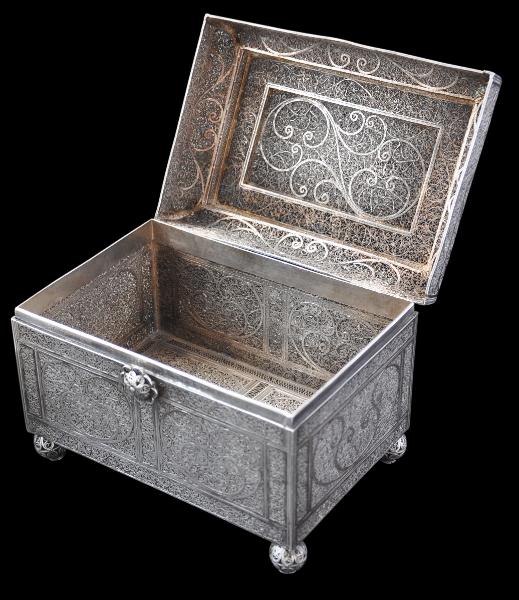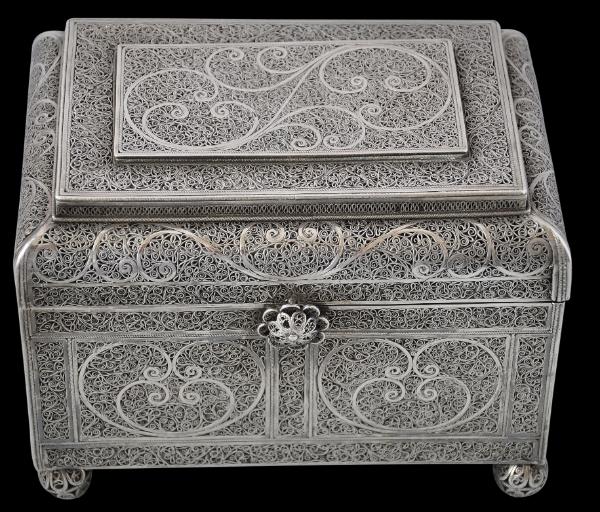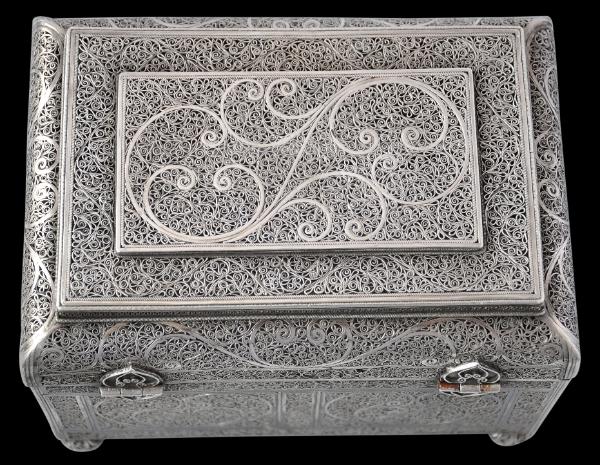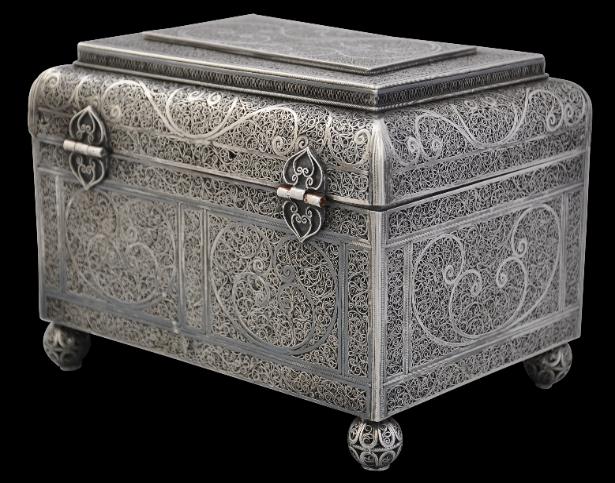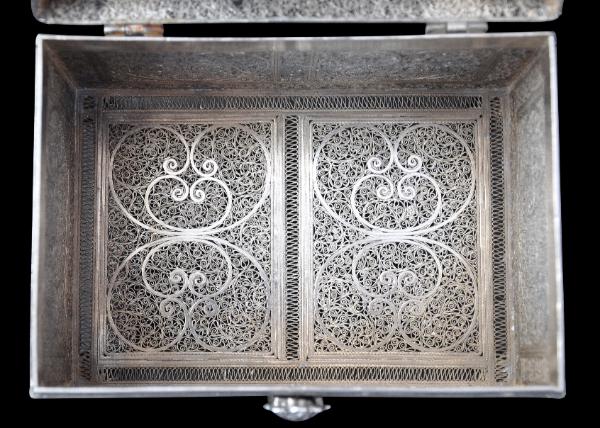
Indo-Portuguese Silver Filigree Casket, Goa
Large Silver Filigree Casket
Indo-Portuguese Goa, India
17th century
length: 16.6cm, depth: 11.6cm, height: 13cm weight: 1,014g
Silver filigree caskets of this age and in this fine condition are very rare. This example, with a hinged raised lid, sits on four spherical filigree feet. The lid is kept closed with a floral filigree latch that has a screw mechanism. Every side of the casket, including the cover and base are of complex silver filigree panels of the finest seventeenth-century workmanship. The filigree features a mixture of flatter, thicker wires that form the outline of the designs. The remaining spaces are filled in with finer, twisted and curled silver wires.
The combination of wide, flattened wire components with fine twisted filigree work is found on articles often ascribed to Goa of the second half of the seventeenth century – see Menshikova (2006, p. 43) for two examples, and Levenson (2007, p. 263-4) for others. Menshikova refers to filigree items of this type as having been made by ‘Chinese masters in India or Southeast Asia’ in the seventeenth century, which leaves open the possibility that such items might have been made in Batavia perhaps, and most probably traded by the Dutch East India Company (VOC). Most such work however is ascribed to Goa.
The inside is engraved with the inscription ‘Scottish Greyhound Derby 1942 – Won by Carntyne’s “Ballycurreen Soldier”.’ It is likely that with war-time scarcity, this box was donated as the winner’s prize for the derby, providing an interesting, later provenance for this seventeenth century item.
A larger filigree cabinet with near-identical work including the same ball feet and back hinges is in the Khalili Collection and illustrated in Rogers (2007, p. 242). The Khalili cabinet recently has been exhibited at the L’Institut du Monde in Paris and at the Art Gallery of New South Wales in Sydney. The Khalili cabinet and this casket almost certainly are from the same workshop. Rogers suggests that the work is likely to have been undertaken in Goa by a Muslim silversmith from Gujarat.
An almost identical filigree casket is in St Petersburg’s Hermitage Museum and illustrated in Menshikova (2006, p. 114). Records show that this casket was transferred from the Winter Palace in 1789. Another similar casket is in the Fries Museum, Leeuwarden, the Netherlands. A casket showing similar filigree work and with ball feet and a similar rosette locking mechanism but with a domed lid is illustrated in Jordan (1996, p. 214). This example is ascribed to seventeenth century India.
This example is in very fine condition. The filigree is intact other than for a tiny strand to the back of the box.
References
Cattaneo, A., et al, Portugal and the World: In the 16th and 17th Centuries, Museu Nacional de Arte Antiga, Lisbon, 2009.
Curvelo, A.,
et al, The Orient Museum, Lisbon, Reunion des Musees Nationaux, 2008.
Jordan, A.
et al, The Heritage of Rauluchantim, Museu de Sao Roque, 1996.
Levenson. J. (ed),
Encompassing the Globe: Portugal and the World in the 16th and 17th Centuries, Arthur M. Sackler Gallery, 2007.
Menshikova, M.,
Silver – Wonders from the East: Filigree of the Tsars, Hermitage Amsterdam, 2006.
Museo de Sao Roque,
The Heritage of Rauluchantim, 2006.
Rogers, J.M.,
The Arts of Islam: Treasures from the Nasser D. Khalili Collection, Art Gallery of New South Wales, 2007.
Provenance
Scottish art market
Inventory no.: 1705
SOLD
to see a related filigree pandan.

